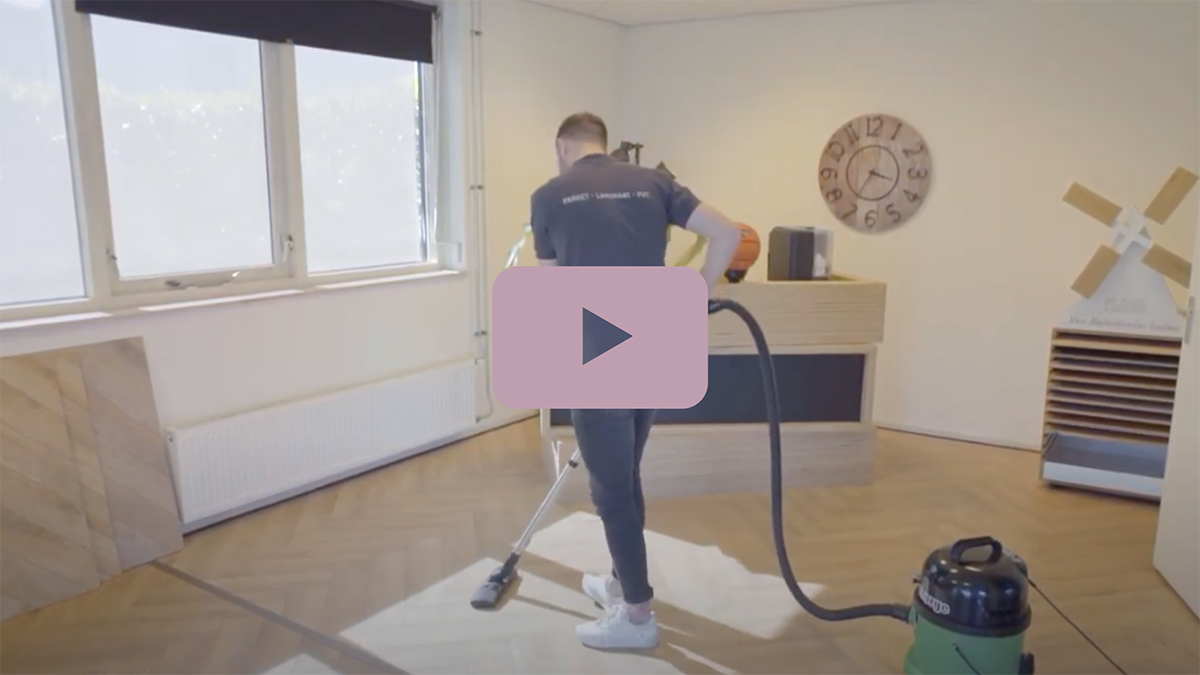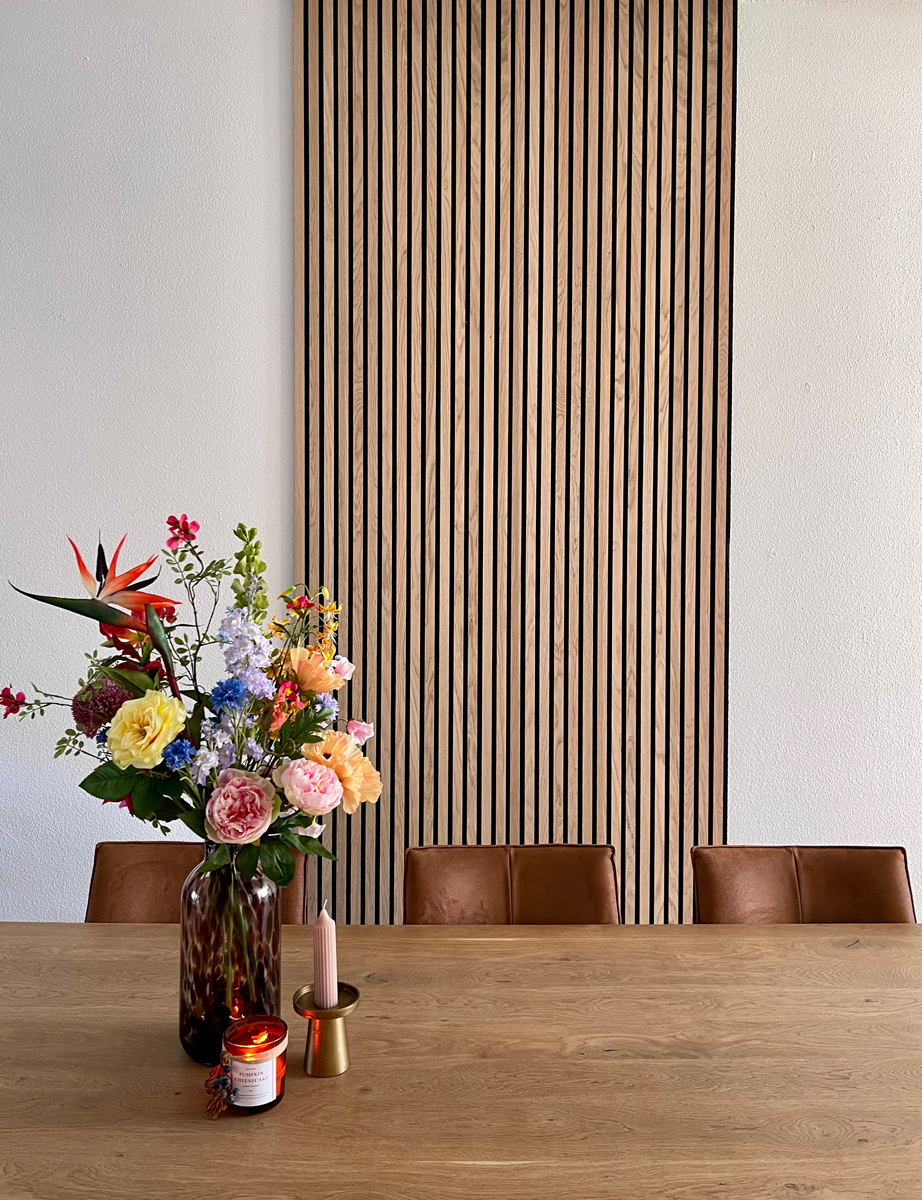After an extensive search for the ideal flooring, the moment has finally arrived: the flooring is now available for order! But how many packs of your preferred flooring will you require? Don’t want to be stuck with an excess or deficiency and unsure how to determine the necessary square meterage? In this article, we will guide you through the process of how you can calculate the floor area for your Floer.
How do I start calculating the number of square meters of the floor?
We start at the beginning by measuring the rooms. To calculate the number of square meters needed, it is important to calculate the floor area of each room. Measure the length and width of each room where the floor will be laid, and multiply them (length x width). Then, add up the areas of all the rooms. This way, you can calculate the total number of square meters of floor needed.
Could you provide an example?

In this example, the customer prefers a Country House Laminate floor:
The living room has a length of 9 meters and a width of 8 meters.
Living room area: 9 x 8 = 72 m2
The corridor has a length of 5 meters and a width of 2.2 meters.
Corridor area: 5 x 2,2 = 11 m2
The kitchen has a length of 4 meters and a width of 5.5 meters.
Kitchen area: 4 x 5,5 = 22 m2
Total area in square meters: 105 m2
Calculating the surface area of a kitchen depends on its floor area!
If you want to know more about this, read on.

Should I include the kitchen when calculating the total floor area in m2?
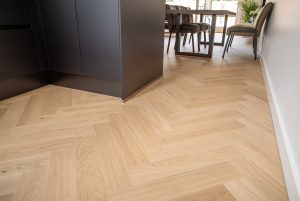
Will your beloved floor be installed in the same room as the kitchen? In most cases, it’s important to install the kitchen first before laying the floor! With bonded floors, like Dryback Vinyl and Oak Parquet, it’s possible to let the kitchen rest on the floor. However, it’s impossible to lay the kitchen on the floor if the floor has a click connection. As the weight of the kitchen rests on the floor, tension is created on the click connection, which may cause the floor to crack. So always lay a Laminate floor or a Rigid Click Vinyl floor free and away from the kitchen!
Since the kitchen is not yet installed and laminate flooring has been chosen, the area where the kitchen will be placed should not be counted. The kitchen area measures 22 m2 (4 x 5.5 meters), but we need to subtract the area where the kitchen will be placed from this total.
An area where the kitchen will be installed: 3 x 1,5= 4,5 m2
105 m2 – 4,5 m2 = 100,5 m2
The total square meters of the rooms where the floor will be laid is 100,5 m2.
Percentage of cutting loss
Now that you know the required number of square meters, it’s time to calculate the cutting loss. Cutting loss occurs because it’s almost never the case that you end up with a full floorboard at the wall. So, the amount of cutting loss to calculate depends on the type of floor and the pattern in which you lay it. You should apply a certain percentage of cutting loss for each type of floor. Do you want to know how much we calculate?
Oak Parquet
Oak floor – 10% cutting loss
Oak Herringbone floor – 18 to 20% cutting loss
Oak Wood flooring collections are:
Laminate
Straight Laminate – 7 to 10% cutting loss
Herringbone Laminate – 15 to 18% cutting loss
Laminate flooring collections are:
- Country House Laminate
- City Laminate
- Reclaimed Wood Laminate
- Authentic Laminate
- Herringbone Laminate
Rigid Click Vinyl
Straight Rigid Click Vinyl – 7 to 10% cutting loss
Herringbone Rigid Click Vinyl – 15 to 18% cutting loss
Tile Rigid Click Vinyl – 10% cutting loss
Rigid Click Vinyl flooring collections are:
Dryback Vinyl
Straight Dryback Vinyl – 7 to 10% cutting loss
Herringbone Vinyl and Whalebone Vinyl – 10% cutting loss
Dryback Vinyl flooring collections are:
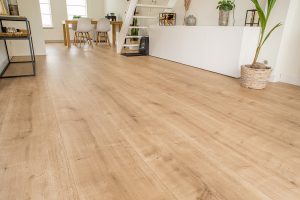
In this example, the customer has chosen a straight Country House Laminate floor. Therefore, we assume a 7-10% cutting loss. As multiple rooms are involved and not just one large room, we choose to assume a 10% cutting loss.
100,5 m2 x 1,10 = 110,55 m2 (rounded up 111 m2)
So, now that you have calculated that you need 111 m2, you can order the flooring!
Calculating square meters of underlay
When using an underlay, you do not need to account for any cutting losses. This is because flooring accessories, such as underlays, do not have joints, and in some cases, only have an adhesive strip. For example, if you have calculated that you need 111 m2 of wide laminate flooring for all the rooms, you will need to use the Non-Contact Underlay underneath it. Each roll of this underlay covers 8 m2.
111 m2: 8 m2 = 13,875 (rounded up 14)
To cover the underlay, we need to round up. Therefore, for the laminate flooring example, we require 14 rolls.
How do I calculate linear meters for skirting boards?
When planning your floor finishing, don’t forget about skirting and wall boards. Make sure to account for cutting losses when calculating the amount needed. The average cutting loss percentage for skirting boards is between 5 and 7%, calculated based on linear meters (m1) instead of square meters. Measure all the walls, add up the total length, and then apply the cutting loss percentage. It’s easy to do.
Calculating the square meters of Herringbone flooring
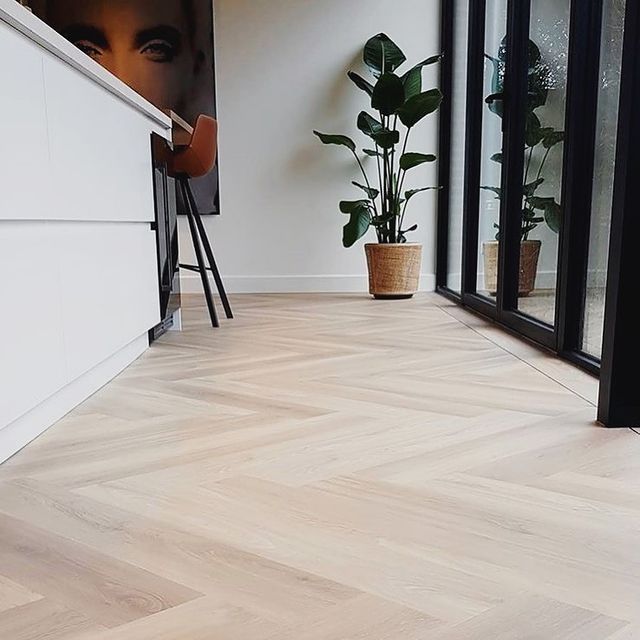
To finish a herringbone floor, you can add a band, which provides an extra border around the entire floor. Typically, a strip also accentuates the border around the floor. This border and trim finish gives a luxurious look to your home and interior. Moreover, when calculating the amount needed for the job, remember to account for a cutting loss of 7-10%.
Now that you know how many square meters you need for your dream floor, are you planning to lay the floor yourself? If so, we offer some handy tips for laying floors such as Oak Parquet – Grey Oiled. If you’re still struggling to choose a floor due to stress, let us inspire you. It’s also easy to order a sample of your desired floor or make an appointment at your nearest dealer to see your Floer floor on a larger surface.


